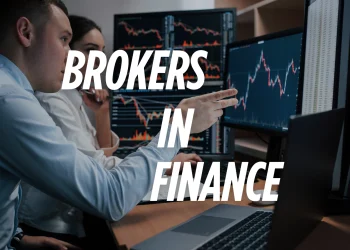The foreign exchange market can provide traders with opportunities for great returns. However, execution issues can often prevent traders from realizing those potential gains. One such execution problem is slippage, the difference between the expected price of a trade and the actual execution price.
Summary
- Slippage is the difference between the expected price of a trade and the actual execution price.
- Several factors contribute to slippage, including market volatility, order size, order type, delayed price data, and broker differences.
- While slippage is inevitable, traders can take steps to minimize its negative impact and maximize long-term sustainability.
Slippage is a normal part of trading, especially in liquid markets like forex where prices are constantly fluctuating. However, large amounts of slippage can significantly erode trading returns. Understanding what causes slippage and how to minimize it can give forex traders an edge.
How Slippage Occurs in Forex Trading
Slippage happens when a trade is executed at a less favorable price than what was available or expected when the order was placed. Several factors contribute to slippage in the forex market:
• Market Volatility: Currency prices move quickly and volatile swings are common, particularly around major news releases. Even minor volatility can cause delays in order execution, resulting in slippage.
• Order Size: The larger the order size relative to available liquidity, the greater the market impact and potential slippage. Large orders often need to be executed in multiple smaller transactions.
• Order Type: Certain order types like market orders are more prone to slippage since they are placed at the current market price, which may change before execution. Limit orders reduce but do not eliminate slippage risk.
• Delayed Price Data: Traders relying on delayed price data rather than real-time feeds face a higher risk of slippage since prices may change significantly during that delay.
• Broker Differences: Some brokers execute trades faster and with less slippage than others, so the trader’s chosen broker can impact potential slippage.
The Effects of Slippage on Forex Returns
Slippage, even minor amounts, can have an outsized impact on trading returns, especially for shorter-term traders:
• Even a few pips of slippage on a standard 100,000 unit position ($100 per pip) equals hundreds of dollars lost.
• The further a currency moves in your intended direction after a trade is placed, the greater the potential slippage versus your expected entry price.
• Slippage eats into trading funds, reducing overall returns and compounding gains over time.
• Many forex traders use tight stop losses, so a few extra pips of slippage could mean the difference between winning or losing a trade.
• While slippage is inevitable, excessive or unpredictable amounts can damage a trading strategy’s reliability.
How to Minimize Slippage in Forex
To minimize slippage and maximize trade performance, forex traders should:
• Use limit orders whenever possible instead of market orders
• Scale into positions with multiple smaller orders instead of one large order
• Trade during low volatility periods when possible
• Use a broker with fast order execution, direct liquidity access, and tight spreads
• Rely on real-time price data feeds instead of delayed market information
•Base position size on available liquidity to reduce market impact
• Maintain a wider stop-loss buffer to absorb some degree of slippage
• Test strategies on a demo account to gauge realistic slippage levels
How to Account for Slippage in Your Strategy

Once forex traders understand the nature of slippage and how to minimize it, the next step is properly accounting for realistic slippage levels within their strategies. Here are some ways to do so:
Test on a demo account. The best way to gauge realistic slippage amounts is to paper trade or use a demo account. This allows traders to test their strategies on historical market data without risking real funds. Traders can see how frequently slippage occurs, and how many pips it typically equals and plan accordingly.
Reduce position sizes. While techniques like using limit orders can minimize slippage, they cannot be fully eliminated. By adjusting position sizes downward to account for some degree of slippage, traders can ensure losses remain within acceptable levels even with execution delays. This helps ensure strategies remain viable over time.
Widen stop losses. As mentioned earlier, traders using tight stop losses are especially vulnerable to slippage wiping out positions. Adding a few extra pips of buffer space to stops can help absorb small amounts of slippage, keeping losing trades from being turned into winners and vice versa due to execution delays.
Monitor slippage during live trading. Once traders transition to real accounts, they should continue monitoring how frequently slippage occurs, how many pips it averages, and compare to demo results. This allows traders to further refine position sizes and stop losses as needed to properly account for real-world slippage.
Overall, properly factoring slippage into forex strategies involves testing, monitoring, and adjusting key parameters like position size, stopping losses, and take profits based on realistic slippage levels. While some losses due to slippage are inevitable, a well-tested and refined strategy can minimize the negative impact and maximize long-term wins.
Conclusion
While perfect order execution is impossible, forex traders can take steps to minimize slippage and protect the reliability of their strategies. By understanding the causes of slippage and employing techniques to mitigate it, traders stand a better chance of optimizing trades in the volatile forex market. With discipline and the right tools, slippage does not have to derail a trader’s long-term success.
In conclusion, slippage remains an unavoidable reality of forex trading that can significantly impact trading returns. However, by using limit orders, scaling into positions, choosing low volatility times to trade, accessing the best brokerage options, and maintaining wider stop losses, forex speculators can minimize slippage and maximize the performance of their strategies.












